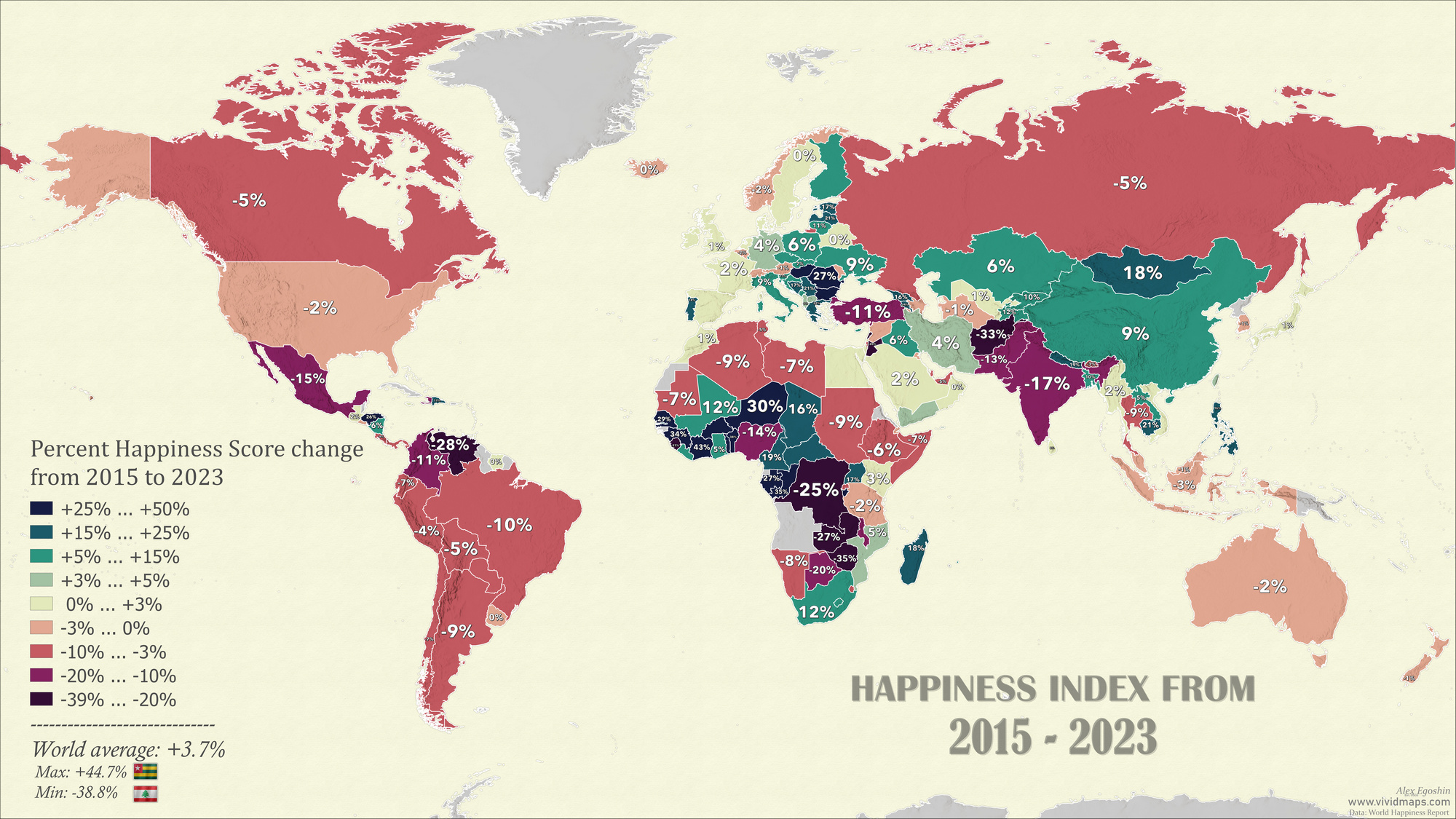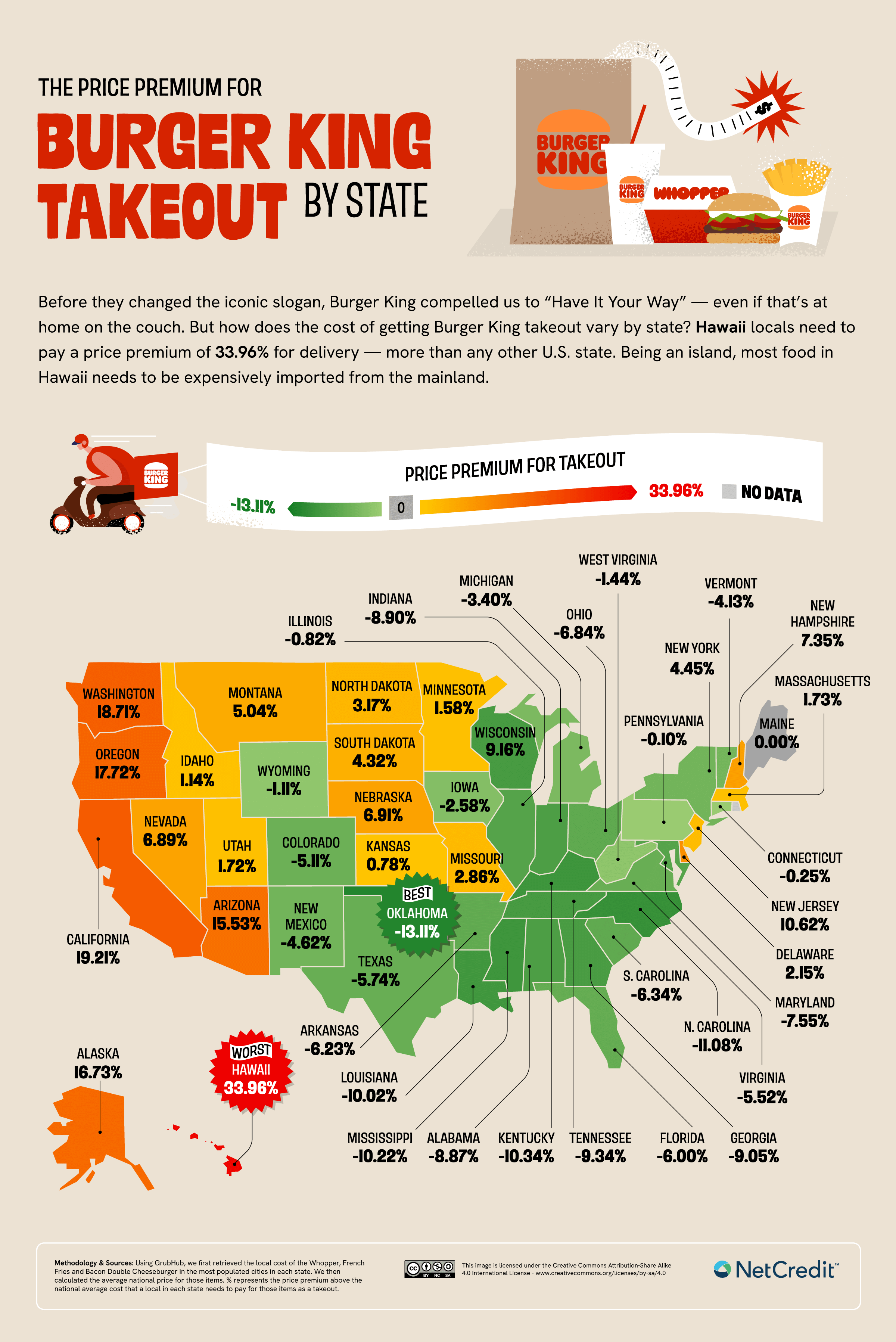The Price of Happiness
Happiness doesn’t come from your income; it’s the way that you spend it that truly matters.
So claim the authors of study affiliated with Harvard that suggested 8 principles to “help consumers get more happiness for their money.” Eight principles that begin with “(1) buy more experiences and fewer material goods” and end with “(8) pay close attention to the happiness of others.”
This change in viewpoint transforms the timeless query from “Can money make you happy?” to “How much money do you need to be happy?” A study conducted by Daniel Kahneman and Angus Deaton in 2010 provided an answer to the former question. Their findings revealed that income is indeed linked to increased feelings of accomplishment and emotional well-being, but only up to an annual income of approximately $75,000 per individual (not per household). Beyond this threshold, additional income does not equate to additional happiness.
Kahneman’s research was based on U.S. survey answers. But a 2018 analysis from Purdue University found a similar “satiation point” of $60-75,000 as a global average, based on Gallup World Poll figures from over 1.7 million people in 164 nations. Importantly, the researchers at Purdue discovered that “there was substantial variation across world regions, with satiation occurring later in wealthier regions for life satisfaction.” The researchers saw potential in this data to assist individuals in reevaluating their personal values and aspirations, guide employers in offering more fitting compensation to their employees, and support governments in enacting fairer wealth distribution policies.
But for a more rational, day-to-day look at how money might impact happiness, S Money decided to convert the figures from the Purdue study back into their local currencies — this time, allowing for purchasing power and the cost of living in each respective location. Because if what you purchase forms your happiness as much as how much you earn, then your happiness per dollar depends largely on where in the world you’re spending it.
Table of Contents
Key Findings
- Iran has the highest cost of happiness worldwide, requiring an a yearlong income of $239,700.
- Happiness is most affordable in Sierra Leone (Africa), where happiness levels off with an earning of $8,658.
- Santa Barbara (CA) is the U.S. city with the highest cost of happiness: $162,721.
- Knoxville (TN) is the U.S. city with the lowest cost of happiness: $88,032.
- In the United Kingdom, the top and bottom cities are London ($103,083) and Leicester ($79,188).
The Price of Happiness in Every Country
According to the world map created by the S Money team, Iran puts the highest price tag on happiness ($239,700), while Sierra Leone is home to the lowest ($8,658).
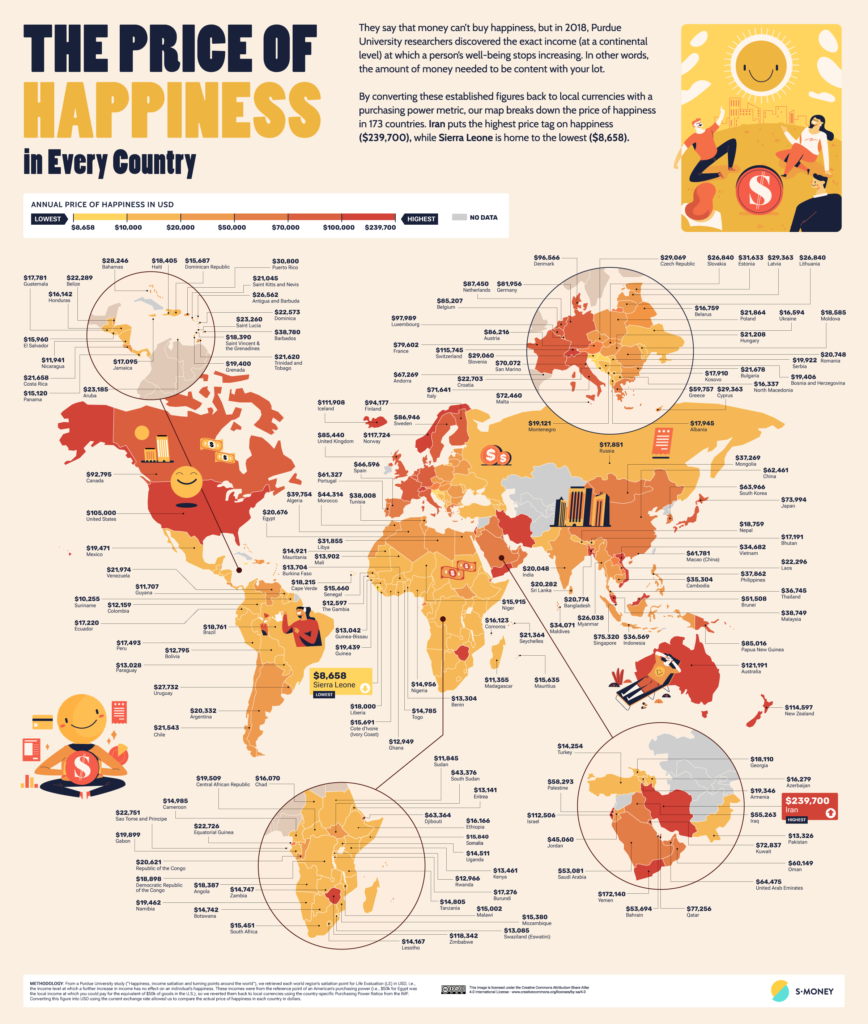
The Countries with the Highest Price of Happiness
Purdue University’s research uncovered a global trend in which emotional well-being stabilizes once a certain income threshold is reached, and it even slightly declines just beyond that point. Nevertheless, the study also highlighted significant regional variations, particularly in more affluent areas, where life satisfaction continues to increase even after reaching that threshold. Lead author Andrew T. Jebb suggests, “This could be because evaluations tend to be more influenced by the standards by which individuals compare themselves to other people.“ Now, let’s explore the countries where the cost of happiness varies the most.
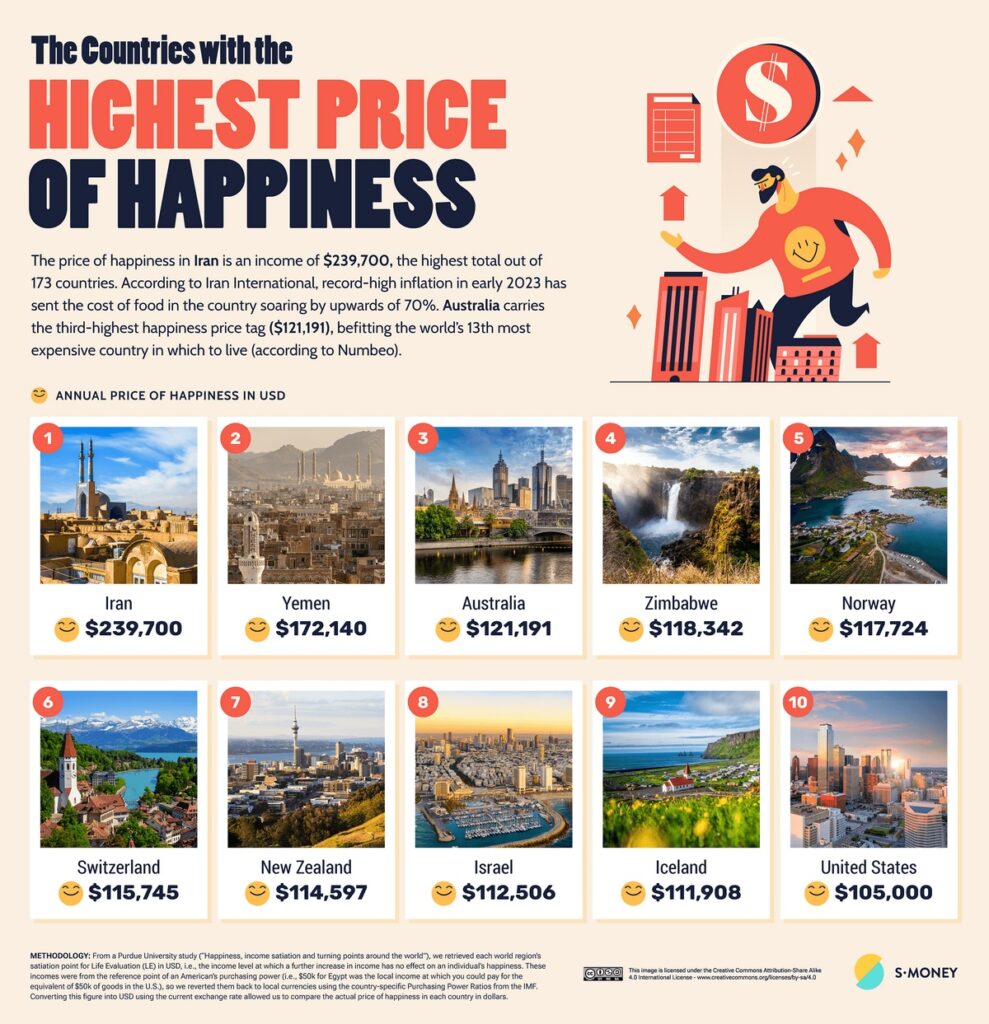
Some of the world’s highest-earning nations are among those with the highest price of happiness, as you might suppose. Take Norway, for instance, consistently lauded as one of the planet’s highest-income countries. Notably, Norwegians’ happiness isn’t solely attributable to individual earnings; their robust social safety net, including strong social security, ensures peace of mind, even in the heart of the dark Scandinavian winter when nights seem to last all day.
Meanwhile, New Zealand and Israel have a high price of happiness despite not being among the top earners. Iran, surprisingly, claims the top spot for happiness, even though over half its population lives below the poverty line, with one in nine subsisting on less than $5.50 per day. Iran’s high happiness cost appears to be predominantly rooted in economic rather than cultural factors, with inflation soaring to approximately 47.7% in February of this year, causing prices for everyday essentials to skyrocket.
The Countries with the Lowest Price of Happiness
The top 10 nations with the lowest income points needed for happiness are in either Africa or the South and Central Americas. Sierra Leone leads at the lowest price of all ($8,658). The cost of living in Sierra Leone is a lot cheaper than in other nations; according to World Data, consumer goods in the West African country cost around 72% less than in the United States.
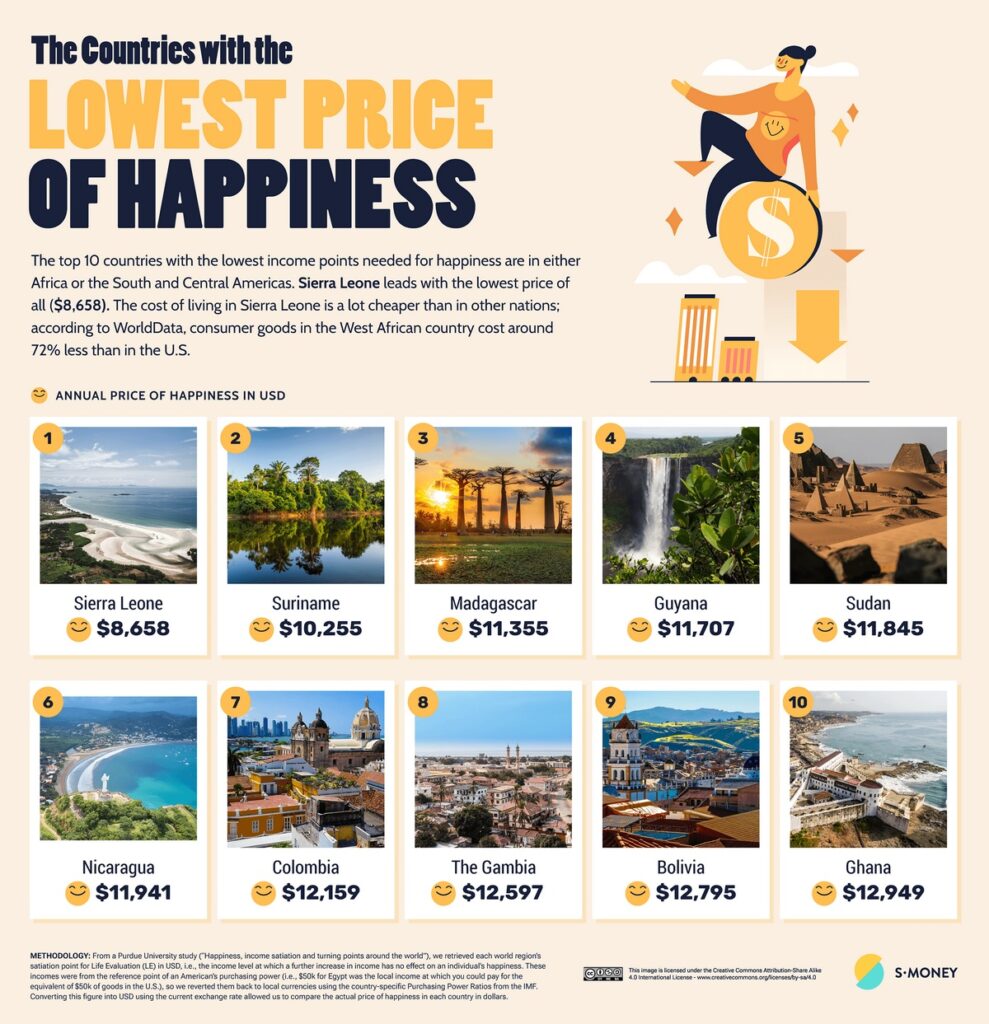
The Price of Happiness in U.S. Cities
The cost of happiness experiences an 85% surge when comparing the most affordable U.S. city for happiness, Knoxville, Tennessee, at $88,032, to the priciest one, Santa Barbara, California, at $162,721. The cost of happiness experiences an 85% surge when comparing the most affordable U.S. city for happiness, Knoxville, Tennessee, at $88,032, to the priciest one, Santa Barbara, California, at $162,721. This difference is based on the cost of living in American cities as indexed on Numbeo. Seaside cities like Santa Barbara endure a higher cost of living — ergo of happiness — because concentration of both high population numbers and wealth.
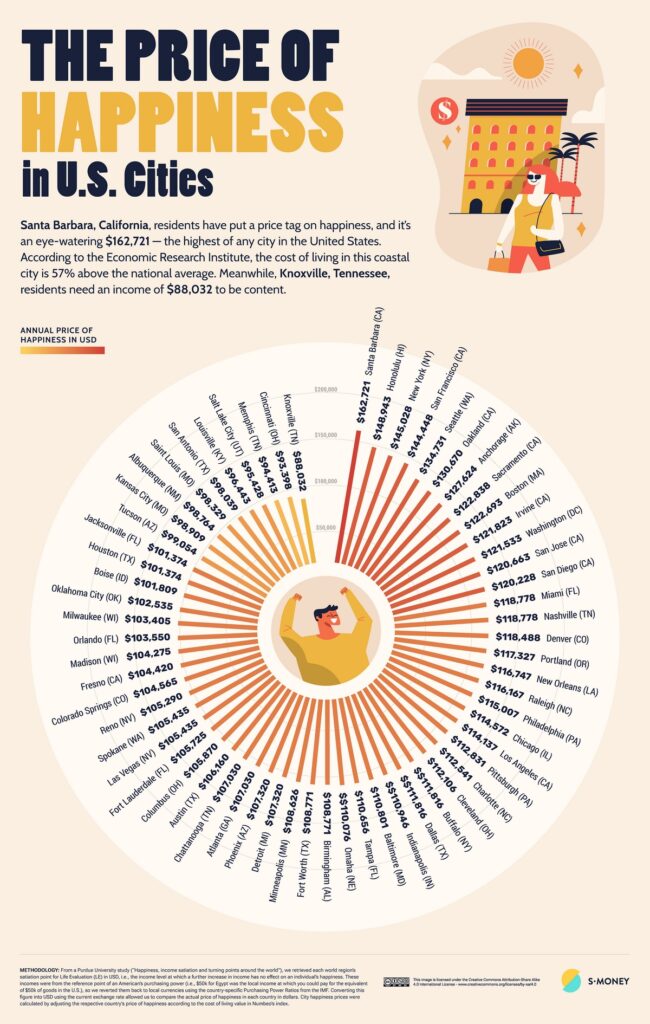
As the New York Times aptly observes, “Major coastal metros have been hubs of the kind of educated workers coveted most by high-powered employers and economic development officials.” But are these ‘coastal elites’ indeed happy? The answer is yes, according to a recent survey conducted by the digital health company Sharecare, which surveyed 450,000 U.S. adults. Surprisingly, San Francisco, San Jose, and Washington D.C. emerge as the top three happiest cities in the United States, even though they are among the 12 cities identified as having the highest cost of happiness.
The Price of Happiness in UK Cities
The disparity in the cost of happiness across cities in the UK is not as pronounced as it is in the United States. However, within cities themselves, the affordability of happiness can vary significantly. Take London, for instance, which boasts the highest cost of living and, consequently, a considerable price attached to happiness. Nonetheless, the reality is that happiness, or the sense of well-being necessary to attain it, remains elusive for the majority of London’s population, given that the wealthiest 10% control a substantial 44.3% of the city’s total wealth, while the poorest 50% hold a mere 5.9%.
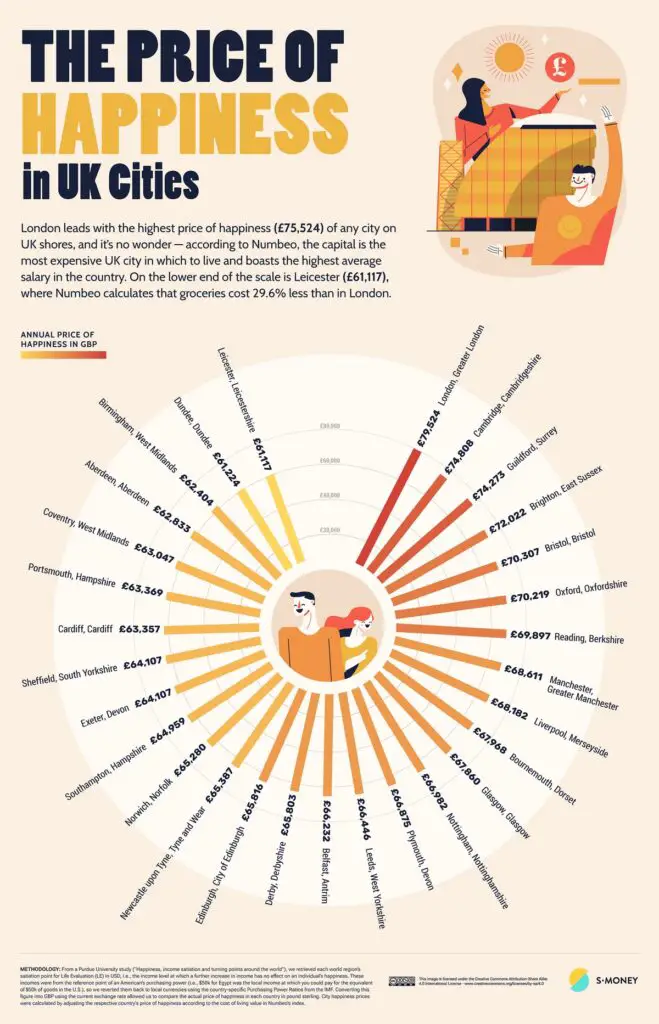
Generally speakin, the south is not a happy place to be unless you are a higher-tier earner. Interestingly, eight out of the top ten cities with the highest cost of happiness are located south of Birmingham. Notably, Birmingham itself offers a comparatively more affordable happiness rate at $80,855. Moreover, Birmingham boasts a suburb built for chocolate makers, which is happier and “twice as pleasant” than the rest of the United Kingdom — and that’s according to a competing confectionery brand!
The Methodology Behind This Study
S Money started by reverse-engineering figures derived from Purdue University’s research into the relationship between happiness and income to uncover the price of happiness in every nation and select cities.
To begin, the team referred to table one of the study and recorded the satiation point for Life Evaluation (LE) in USD for different global regions. Life Evaluation is a metric from the World Gallup poll that estimates how good an individual considers their life to be. The satiation point of LE signifies to the income point at which any further growth in income has no impact on an individual’s happiness.
The study data grouped countries into world regions and quoted the satiation points relative to an American’s purchasing power. So, to find the local price of happiness by nation, the S Money team converted these figures back to local currencies using nation-specific Purchasing Power Ratios obtained from the International Monetary Fund. Purchasing power ratios indicate the number of units of local currency that are equal to the buying power of one U.S. dollar in the U.S.
Finally, S Money converted local currencies back into American dollars using current exchange rates provided by Google Finance. This is the price of happiness.
Furthermore, the team estimated the price of happiness for select cities within each country by adjusting the country’s happiness price based on the cost-of-living values for both countries and cities, sourced from Numbeo’s index.
The data presented in this analysis is correct as of July 2023.

